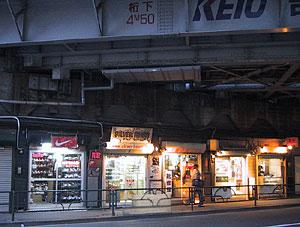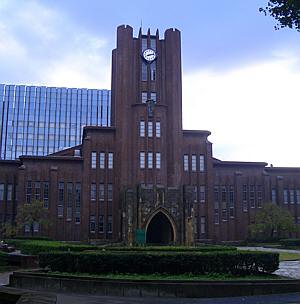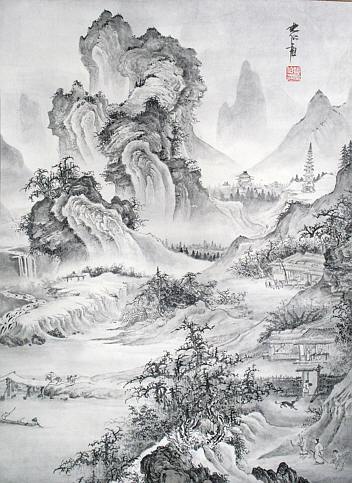Notes
10. Taishan. Or Mount Tai (the suffix shan functions the same in Chinese as san in Japanese). Taishan, also known as the Jade Emperor Peak, is one of the Five Sacred Mountains of China, which are also aligned along the cardinal directions. Except for the Mountain of Wormwood, the English transliterations are the same as Rakushun describes them here. [return]
11. Yamato is specifically identified with the historical period beginning in the 3rd century and ending with the establishment of the Heian (Kyoto) government in the late 8th century. [return]
12. The Kunlun Mountains in China run east to west along the northern edge of the Tibetan plateau. In Chinese mythology, the Kunlun Mountains are said to be a Taoist Shangri-La, and home to the Royal Mother of the West. [return]
13. Han. Also pronounced "kan," as in kanji, or "Chinese character." It was during the Han Dynasty (202 B.C. to 220 A.D.) that China emerged as a world empire equal to that of Rome, with a consolidated political, military, and economic infrastructure. The Han today constitute the majority ethnic group within China, to the extent that "Han" is often used as a synonym for "Chinese." [return]
14. En. The characters used to write The Kingdom of En and The Royal En are different. The "En" in the former means wild goose; in the latter it is the root of the verb, to prolong. [return]
15. Federal system. Although the prefecture (ken) in Japan can be analogized to the American state, prefectural governors in Japan enjoy far less autonomy than U.S. governors. The independence of the individual states, however, is checked by the limits imposed by the U.S. Constitution. That is, state law cannot supercede or annul federal law. For example, when Oregon and California tried to decriminalize the possession of marijuana, they were overruled by the federal government. [return]
16. Fender. A section of canvas, wood, rope webbing or old tires lowered over the gunwales to protect a boat from getting damaged when it pulls alongside a pier or another ship. Also known as a "camel." [return]
17. Under-girder. A literal translation. These are shops built directly under the I-beam trestles that hold up elevated train tracks and roadways. They are common in cities where real estate is at a premium. The image below is of under-girder kiosks beneath the Keio line outside Kichijouji Station in West Tokyo. These are actual shops, not vending machines. Note the Nike swoosh on the left. It's a shoe store. [return]

18. The characters for Heki Rakujin literally mean, "a deserter from the barricades." Considering the events immediately prior to his being caught up in the shoku that brought him to the Twelve Kingdoms (explained further in the next chapter), Rakujin would seem to have chosen this unusual name with a certain self-deprecating irony in mind. Throughout Japanese history, individuals have changed their names to reflect changes in their life or philosophy, or with purely utilitarian motives in mind. The Tokugawa Shogun was born with the surname Matsudaira, and purportedly changed his name in order to claim the more reknown Minamoto and Fujiwara clans as ancestors. [return]
19. A big deal at the time. During student protests at Japan's elite Tokyo University in January 1969, a group of hardliners barricaded themselves in Yasuda Hall until heavily-armed riot police were mobilized to evict them by force. [return]

20. Writing. Although Chinese and Japanese belong to completely different linguistic familes, both grammatically and phonologically, Japanese scholars have been incorporating Chinese characters into the written language since the 5th century. Consequently, many Japanese and Chinese kanji are written similarly and have similar meanings, much in the same way that English, primarily a Germanic language, shares many cognates with Romance languages due to the influence of Latin and the lasting effects of the Norman Invasion in 1066. [return]
21. Ten months. In some quarters, the myth persists to this day that Japanese women come to term in ten months, not nine. There are several explanations for this. One is that the pregnancy is counted from the week of the last period. A more authoritative source (Tom Gally) points out that in Japanese medical texts, pregnancies are counted in 10 months of 28 days, or 280 days. A typical nine-month pregnancy, in comparison, would be around 270 days, within the margin of error.
[return]
22. A calligraphy brush. [return]
23. A sumi-e watercolor by Jan Zaremba. [return]
24. Five thousand. Just to clarify the reason for the 5000 number here and the 6000 number above; in each kingdom, there is an Imperial Army as well as the military units garrisoned by each province (i.e., the National Guard). This means there are 5000 "Imperial" troops stationed in Sei, plus a sufficient number of provincial soldiers to bring the total to 6000 in Iryuu alone. [return]